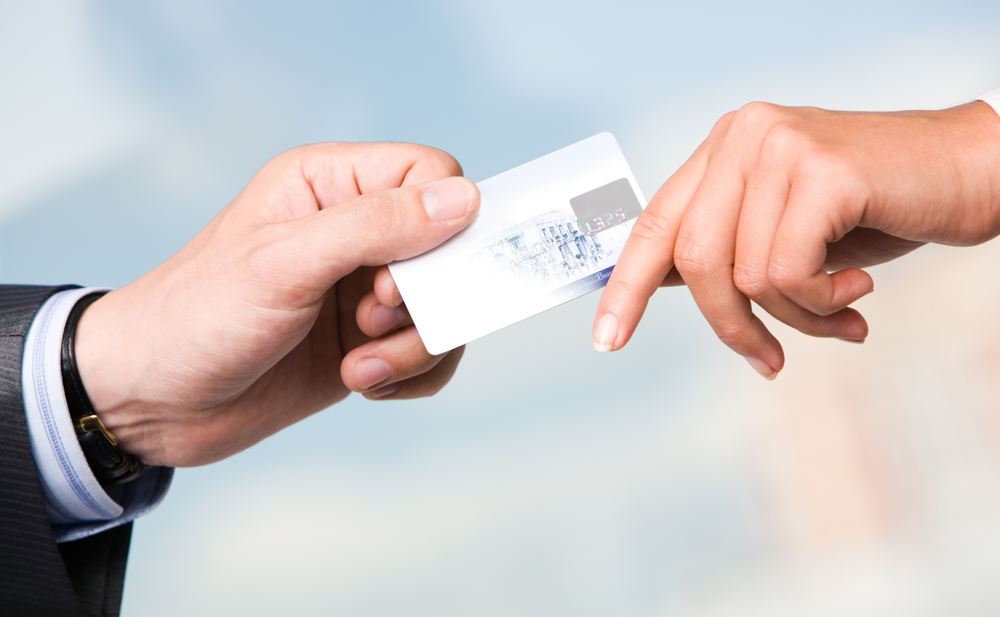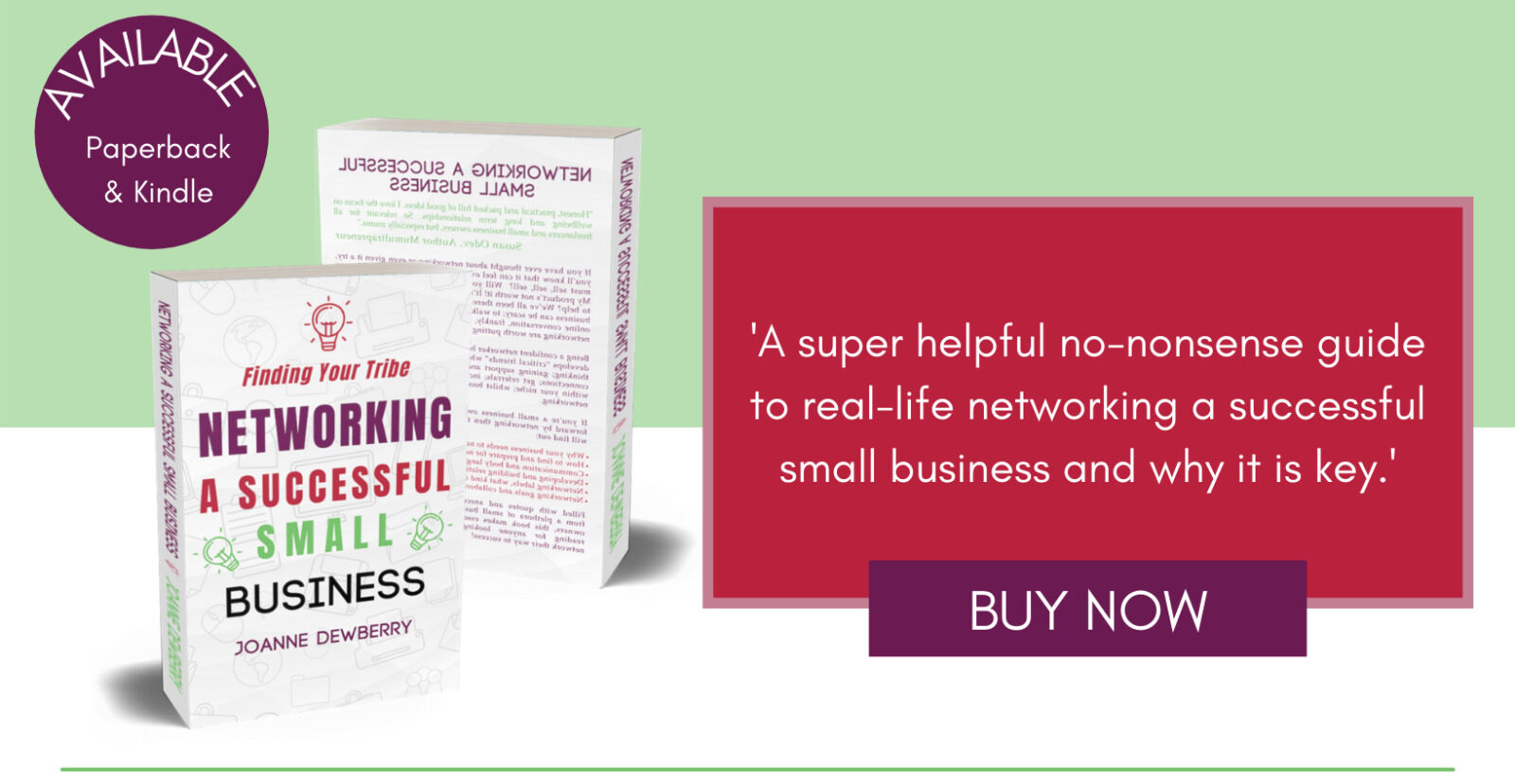I went to a networking event, a few years ago, where I talked about blogging, a guy who ran a small printing business said he had no idea what to write about, and I replied with “Are business cards dead or still a useful tool?” As it happened every attendee at that event had some to hand out but this isn’t usually the norm. Many people don’t see business cards as a necessity as it’s easy to say “oh I’m JoanneDewberryUK across the board on social media.” *cough blatant plug cough* but unless you follow them straight away (i.e right THEN at the event, which most people won’t) you may just forget.
A business card works as a physical reminder that you met someone, their details and most importantly what they do. I believe business cards are an essential piece of your marketing and networking kit (and if you haven’t got any left consider taking along your latest flyer, magazine anything tangible to give away, always carry something).

What Information Do You Need on Your Business Cards?
Business cards also make you look far more professional and organised, it’s a little bit lame scratching your details down on a scrap of paper or being disorganised with nothing at all to share. The hardest part, when it comes to designing business cards is deciding just what information you should include. It can be easy to overload the business card with tons of information as mentally you don’t want to miss anything but as a receiver, this can look really busy and give the receiver far too many options. Too many options can also make it hard for the receiver to know what you do and what you want them to do, call to action is important but too many are overwhelming.
Your Contact Details
Email, phone, website and most importantly your name. It’s always the obvious things we overlook. Don’t overload your business card with social media platforms, pick one and remember we always have our phones to hand you can always ask them “What’s your Twitter handle and I’ll follow you now” It’s also a handy way to keep the conversation flowing. But don’t worry as once you start connecting with individuals online you can always direct them to other platforms.
When I was designing my new business cards I listed the top things I wanted people to know;
- My name – Joanne Dewberry
- Email – joanne@joannedewberry.co.uk
- Website Address – www.joannedewberry.co.uk
- Twitter Handle (as still aiming for the elusive 10,000 followers #40before40) – @JoanneDewberry
Trisha Reece Virtual PA Services soon realised there was a pattern to my information that would work well on a design she had previously seen. I literally love how it looks ⤵️

Use the Front and Back of Your Business Card
The back is great for adding images which you can normally split across the number of cards you order. This can be handy for using your business cards to target your audience. For example, a photographer may choose to give out his headshot images at a corporate networking event and save his wedding images for a wedding supplier event. Or consider using the backs of your business cards for loyalty schemes and appointment cards, this technique will help ensure people hold onto them longer too.
Think Quality Printing for Your Business Cards
Always opt for the best quality you can afford. (Be careful though as some cheaper printers may request their branding or website address on your business cards as a way of providing them at that low-cost price.) If you have a handmade business there really isn’t anything wrong with making your own business cards, however, remember to consider if this will be cost-effective? Make sure your business card sparkles and shouts quality this, in turn, creates a lasting impression. If you take this much care over your business card imagine what the receiver will be thinking about the quality of your service.
I’ve wanted to have recycled business cards for ages as I’m trying to increase my eco-friendly credentials but have always been worried the quality would be naff. When Aura-Print offered me 250 business cards to review I knew this was the perfect opportunity to give recycled business cards a try. I went for a 700gsm thickness as I wanted them to feel special which I LOVE but you would still get a lovely quality from 350gsm as mine are almost like 2 cards thick! However, at least I know they won’t get torn or crumpled at the bottom of someone’s bag! I also went for the rounded edges as I like a more fluid, circular feel to my branding.

Using Template Business Cards
Business card templates are there to help you create your own business cards without having to spend hours with graphic editing software. However, not all business card templates are equal. You can find plenty of articles telling you what to look for in business card templates. We’ll tell you what to avoid in business card create tools and templates so you can weed out the worst choices and find one that’s right for you.
User Unfriendly Interfaces
The simplest business card templates are built into most word processing software. Import a graphic and place it on the side of the page. Enter your business name, personal name, mailing address, phone number and, if appropriate, email address to give everyone who receives the business card your contact information. Throw in a web address, and you have a business card that does its job. This should be achievable with a few button clicks and a little data entry. Avoid business card templates that make creating a business card as much work as editing a magazine cover. After all, there are much simpler options. The best business cards templates are easier to use than the templates in your word processing software while having additional options.

Limited Printing Options
Avoid business card templates that limit your printing options. For example, some free templates come with the caveat that you can only order business cards through their print shop. It is essentially a sales funnel. The best business card creation templates let you print business cards to your own printer or save the file for use later. Note that you want the ability to save your work to avoid having to reinvent the wheel every time you want a new batch of business cards, but that is of limited value if you can only print the new cards through the same printer. While most business card creation tools should let you use any standard business card stock, you want to be able to choose printing options like matte finish or cards with bevelled edges.
No Error Proofing
A business card creation tool can’t tell if you’ve misspelled your own name or business name. It doesn’t know if you’ve transposed digits in your phone number. For that reason, you’re always going to need to proof your own business cards before saving or printing them. However, business card templates should come with basic error-proofing and verification checks. For example, you want one that makes it obvious when you leave out the area code or a digit out of the 10 digit phone number.
Error proofing can include the file creation and updating, as well. For example, it should prompt you to save your work. It should also verify that you want to overwrite an existing file or delete prior versions. Ideally, it should warn you when the fonts you chose aren’t recognized or the print job has encountered problems. When you know that the colour or font translation isn’t faithful, you are less likely to pay to print a lot of business cards that won’t come out looking the way you wanted.
Do not automatically assume business cards should be landscape why not stand out from the crowd, present something different and design your business card in portrait, square or even circle. Ensure your business card is unique to you and not one off the shelf that looks like everyone else’s.

Streamline Your Branding
Retail expert and fellow Sage UK Business Expert Graham Soult, Canny Insights, has designed his business cards in the style of retail Top Trumps, not only is this in keeping with his branding, it’s a talking point and it makes his cards memorable (otherwise I wouldn’t be mentioning it now). Streamline your branding by sticking to exact colours, fonts and images which are all synonymous with your small business brand.
Think About the Colours You Use
Some people might want to jot details down on your business card, clues to remind them about your small business, maybe where you met for when they get home. In this case, I’d try to avoid dark or block colours like blue and black. Personally, I think you can’t go wrong with at least one side being more white, simplistic possibly slightly more minimalistic.
I opted for white on both sides of my design as it matches my branding, I also chose not to use lamination making it much easier for someone to pencil notes on my business cards. I also felt that the natural feel added to the overall quality.
Update and Re-evaluate Business Cards Regularly
Things changed. Fact. You don’t want to be turning up to an event with an out-of-date business card.
I’m absolutely in love with my new business cards. I cannot wait to do more face-to-face networking so I can hand these out! What do you think are the important aspects of business cards? Or do you think they have lost their relevance during small business networking?
Using Business Cards at Networking Events
At Walton Castle we met Roy Sheppard and as a business card, he gave us both a little book. Meet Greet & Prosper: Turn more strangers into real friends and valuable business contacts is a really useful book, not only is it a handy size but it’s jam packed full of networking nuggets. The booklet looks at everything from what to take to networking events, how to remember people’s names to the importance of business cards.
Use Your Perfect Pitch When Handing Out Your Business Cards
When passing out business cards always make eye contact with the person you are handing them to. Be confident, and say something memorable about your business.
Always Be Prepared
I’m always telling people to carry them everywhere and rarely do myself! Prime example Kara and I were out at Avon Country Park (somewhere we go regularly and have blogged about a lot!) on this occasion, we met the manager and chatted about the park, facilities and our blogs! How cross with myself am I that I was unable to hand him a business card so he could have looked me up later!
For more Business Card Tips and Hints see Networking A Successful Small Business pages 69-73
This post complies with my Disclosure Policy.
Found this useful wondering how you can show me your appreciation? Well, there are some ways you can say thanks and support my website: ➡

Thanks for this… will get on to it 🙂
Yours look fab Joanne! You are so right about how useful they can be for referring back to after an event. But less so for just collecting at events, which I’ve definitely been to events where that happens. I only take a card from someone I’m genuinely interested in contacting.
Absolutely love them too. The quality and feel are amazing and the design is pretty cool too, if I do say so myself!
Trisha Reece recently posted..Why You Should Use a Planner
Interesting! I had some made a couple of years ago and I’ve never given any out! I really need to dig them out again!